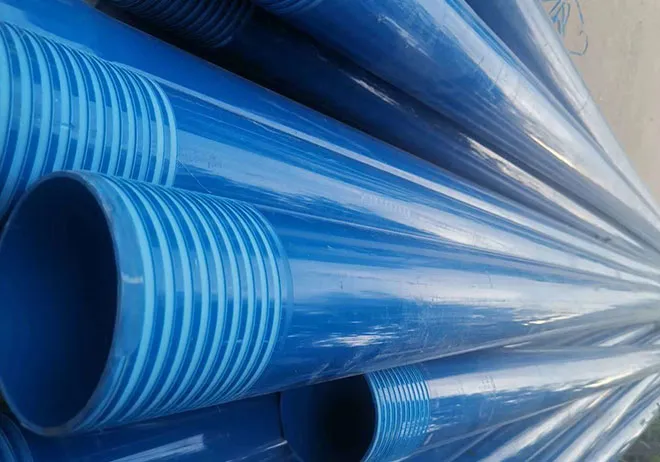Oct . 17, 2024 08:06 Back to list
hdpe pipe for water supply specifications factories
Specifications and Manufacturing of HDPE Pipes for Water Supply
High-Density Polyethylene (HDPE) pipes have emerged as a preferred choice for water supply systems worldwide, thanks to their durability, flexibility, and resistance to corrosion. The efficient transport of water is pivotal in both urban and rural areas, making the specifications and manufacturing processes of HDPE pipes critical for ensuring reliability and performance in water supply applications.
Composition and Characteristics
HDPE is a thermoplastic polymer made from petrochemical products. Its molecular structure allows for high tensile strength and impact resistance, which are essential in water supply systems that may be subject to varying pressures and environmental conditions. The key characteristics of HDPE pipes include
1. Corrosion Resistance HDPE pipes are immune to rust and electrochemical corrosion, enhancing their lifespan. 2. Chemical Resistance They can withstand a wide variety of chemicals, making them suitable for diverse water applications. 3. Flexibility The material's flexibility allows for easy installation, even in difficult terrains, and can absorb ground movement without cracking. 4. Low Friction Coefficient This characteristic ensures efficient fluid flow, reducing energy costs associated with pumping. 5. Lightweight HDPE pipes are lighter than traditional materials like ductile iron or concrete, which simplifies installation and reduces transportation costs.
Specifications
When considering HDPE pipes for water supply, several specifications must be adhered to, ensuring that the pipes meet industry standards. Key specifications include
hdpe pipe for water supply specifications factories

1. Pipe Dimensions HDPE pipes typically come in diameters ranging from 16mm to 1200mm, with thicknesses categorized under SDR (Standard Dimension Ratio). The SDR indicates the relationship between the diameter and the wall thickness, impacting the pressure rating. 2. Pressure Ratings The pressure rating of HDPE pipes varies based on their intended application. Common classes include PE 63, PE 80, and PE 100, with PE 100 being the highest in terms of stress resistance. 3. Standards Compliance HDPE pipes for water supply must comply with international standards such as ASTM D3350, ISO 4427, and AS/NZS 4130. Compliance ensures that the pipes are suitable for potable water applications and are safe for human consumption. 4. Color Coding Typically, HDPE pipes for potable water are marked with blue stripes, while those for non-potable water might have a different color to prevent confusion during installation.
Manufacturing Process
The manufacturing of HDPE pipes involves several steps to ensure high quality and performance
1. Material Selection High-grade HDPE resin is selected based on the required specifications and performance criteria. 2. Extrusion The selected resin is melted and extruded through a die to form the pipe shape. The extrusion process must be carefully controlled to maintain uniform thickness and diameter. 3. Cooling and Sizing After extrusion, the pipes are cooled and resized to achieve the correct specifications. This process often involves passing through water baths or air cooling systems. 4. Quality Control Rigorous testing is conducted at various stages of production. Tests include hydrostatic testing, dimensional checks, and inspection for surface defects. 5. Cutting and Packaging Finally, the pipes are cut to specified lengths and packaged for transportation. Proper handling and packaging are essential to prevent damage during transit.
Conclusion
HDPE pipes are an excellent choice for water supply systems, offering a combination of strength, flexibility, and longevity. Adhering to proper specifications and manufacturing practices is vital for ensuring that these pipes perform effectively in real-world applications. As global water demands increase, the adoption of HDPE pipes will likely continue to rise, contributing to safer and more efficient water supply networks. Manufacturers must prioritize quality and compliance with international standards to maintain the integrity of water supply infrastructure around the world.
-
High-Quality PVC Borehole Pipes Durable & Versatile Pipe Solutions
NewsJul.08,2025
-
High-Quality PVC Perforated Pipes for Efficient Drainage Leading Manufacturers & Factories
NewsJul.08,2025
-
High-Quality PVC Borehole Pipes Durable Pipe Solutions by Leading Manufacturer
NewsJul.08,2025
-
High-Quality PVC Borehole Pipes Reliable PVC Pipe Manufacturer Solutions
NewsJul.07,2025
-
High-Quality UPVC Drain Pipes Durable HDPE & Drain Pipe Solutions
NewsJul.07,2025
-
High-Quality Conduit Pipes & HDPE Conduit Fittings Manufacturer Reliable Factory Supply
NewsJul.06,2025

